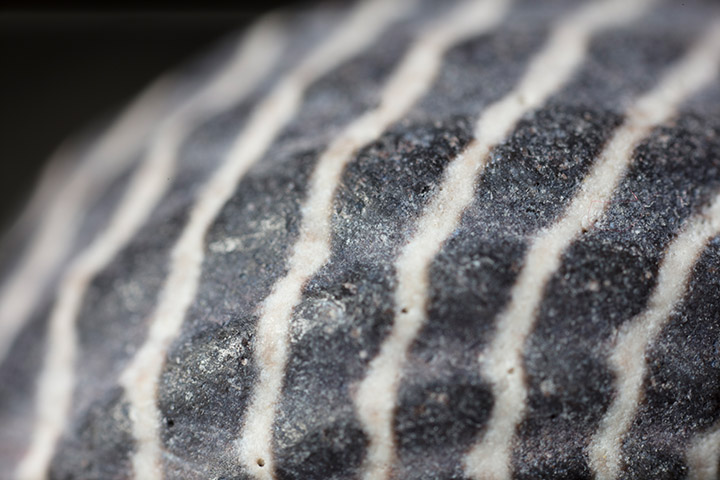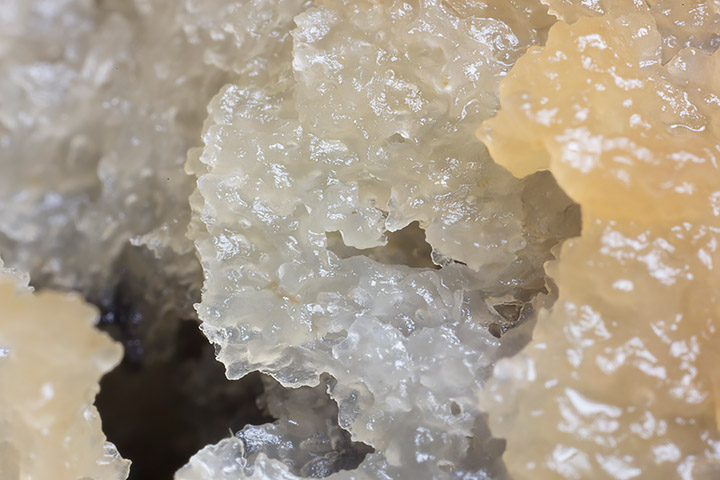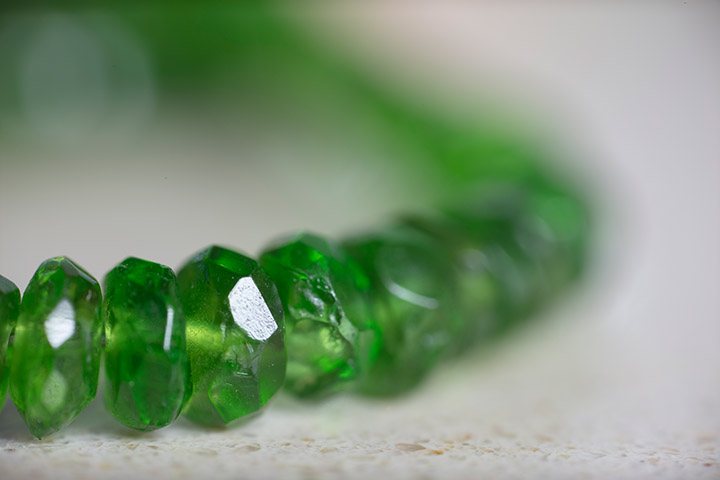|
Laowa 25mm f/2.8 2.5-5x Ultra-Macro - Review |
|
Lens Reviews -
Canon EOS (Full Format)
|
Review by Klaus Schroiff, published June 2018

Introduction
The following review is a bit unusual by our standards ... because you won't see any performance charts. The thing is - in this case, it pretty much impossible to do so.
This review, or report if you like, is about the Laowa 25mm f/2.8 2.5-5x Ultra-Macro. You may argue that we have formally tested macro lenses before but all these were able to focus to infinity - the Laowa can't. However, the Laowa lens can go where other macro-lenses can't go and that's an object magnification of 2.5x to 5x. The object magnification is, of course, also defining the focus range. If "magnification factor" doesn't resonate with you - it just refers to the ratio of the physical dimension between an object in real-world and on-sensor. Or even more concrete - if your object has a size of 36x24mm, it'll cover the whole sensor with a magnification factor of 1. Thus with a factor 2.5-5x, you are entering at least the far end of the realm of microscopes really (microscope tend to start at 4x magnification). Hence also the portion "Ultra-Macro" in the lens name. And that pretty much explains why we can't do any formal testing because we'd rather test the resolution of our test charts than the resolution of this lens.
 This explanation may tell you a bit of the target audience of this lens - it's for the macro extremists who think that conventional macro lenses are just for the faint-hearted. The extreme scope is also reflected by the unusual shape of the lens as you can see below. It may be a 25mm f/2.8 lens but it certainly doesn't look like one. It may have a formal focal length of 25mm but this does still translate to an angle of view of just 10.3° (compared to 82° in a conventional 25mm full format lens). According to Laowa, this design allows a bigger depth-of-field compared to other extreme macro lenses.
The Laowa 25mm f/2.8 2.5-5x Ultra-Macro has an all-metal construction. The inner lens tube extends when focusing towards higher magnification ratio. There's no wobbling whatsoever even at its most extreme setting. The lens is, as usual, fully manual so there's no electronic coupling whatsoever - so no AF, no automatic aperture control and no EXIF data. The aperture is adjusted at the very front - which doesn't feel like an ideal position in our book to be honest. Front filters are not supported.
This explanation may tell you a bit of the target audience of this lens - it's for the macro extremists who think that conventional macro lenses are just for the faint-hearted. The extreme scope is also reflected by the unusual shape of the lens as you can see below. It may be a 25mm f/2.8 lens but it certainly doesn't look like one. It may have a formal focal length of 25mm but this does still translate to an angle of view of just 10.3° (compared to 82° in a conventional 25mm full format lens). According to Laowa, this design allows a bigger depth-of-field compared to other extreme macro lenses.
The Laowa 25mm f/2.8 2.5-5x Ultra-Macro has an all-metal construction. The inner lens tube extends when focusing towards higher magnification ratio. There's no wobbling whatsoever even at its most extreme setting. The lens is, as usual, fully manual so there's no electronic coupling whatsoever - so no AF, no automatic aperture control and no EXIF data. The aperture is adjusted at the very front - which doesn't feel like an ideal position in our book to be honest. Front filters are not supported.
 The Laowa 25mm f/2.8 2.5-5x Ultra-Macro lens is not unique. At least in Canon land, it has a competitor - the Canon MP-E 65mm f/2.8 1-5x macro. The Canon lens is manual focusing only as well albeit it does offer aperture coupling it produces EXIF data. That being said, the Canon lens costs more than twice as much as the Laowa which sells for about 399USD. The lens is also available in Nikon-, Pentax- and Sony FE-mount (plus Fuji and MFT with an adapter) and the Laowa lens is your only option there as far as a pure lens solution goes at least.
The Laowa 25mm f/2.8 2.5-5x Ultra-Macro lens is not unique. At least in Canon land, it has a competitor - the Canon MP-E 65mm f/2.8 1-5x macro. The Canon lens is manual focusing only as well albeit it does offer aperture coupling it produces EXIF data. That being said, the Canon lens costs more than twice as much as the Laowa which sells for about 399USD. The lens is also available in Nikon-, Pentax- and Sony FE-mount (plus Fuji and MFT with an adapter) and the Laowa lens is your only option there as far as a pure lens solution goes at least.
 An interesting aspect is also the working distance - thus the distance from the front element to the object - it's 45mm at 2.5x & 40mm at 5x magnification. That's very close, of course, but you can still manage to arrange the lighting without running into major obstacles. If studio lights are too cumbersome for you - Laowa is also offering a Macro-Twin Flash for 299USD. A dedicated tripod collar is also available for 30USD. Due to the fairly low weight of the lens (400g), it's probably not really needed though.
An interesting aspect is also the working distance - thus the distance from the front element to the object - it's 45mm at 2.5x & 40mm at 5x magnification. That's very close, of course, but you can still manage to arrange the lighting without running into major obstacles. If studio lights are too cumbersome for you - Laowa is also offering a Macro-Twin Flash for 299USD. A dedicated tripod collar is also available for 30USD. Due to the fairly low weight of the lens (400g), it's probably not really needed though.
| Specifications |
|---|
| Angle of view | 10.3° |
| Optical construction | 8 elements in 6 groups |
| Number of aperture blades | 8 |
| min. focus distance | 17.3 cm (5x) – 23.4 cm (2.5x) |
| Dimensions | 82 x 65mm |
| Weight | 400g |
| Filter size | - |
| Hood | - |
| Other features | - |
Practical Considerations
The Laowa 25mm f/2.8 2.5-5x Ultra-Macro is not a normal lens and the uninitiated will soon discover the following:
- handheld photography is impossible. The Depth-of-Field is so shallow that it becomes uncontrollable without a tripod.
- pretty much everything you want to shoot has to be ... dead. Because if it's moving ... well .. the DoF issue ...
- Everything's shaky - the sturdy tripod has to stand on sturdy grounds.
- Everything's dirty - you will discover that the world is a filthy place and cleaning your objects will become a task of its own ...
- Patience is core to whatever you do ... (and that was certainly the hardest part for me)
- You have to disable exposure simulation on Canon EOS cameras (in live view mode). Even so the cameras will only amplify the light to a certain degree (on the display) when stopping down so strong ambient light is a good idea. Please note that this behaviour will differ between camera makers and also between different camera models.
In essence - while you may be able to use the lens outdoor in certain situations, its natural habitat is a studio really (or at least indoors).
A sturdy tripod helps a lot and if possible you should have a focusing rack (e.g. a Novoflex CASTEL focusing rack). Alternatively to a focusing rack, you could also place your object on a movable block and "focus" by moving the block into the right position.
Samples
Honestly speaking I'm far from being a macro expert (and did I mention that I'm not patient?) so please be gentle ...
Secrets of a Coke bottle straight from the fridge ...
 A Coral ...
A Coral ...
 ... or do you prefer a mussel maybe?
... or do you prefer a mussel maybe?
 Found something in the kitchen here ...
Found something in the kitchen here ...
 Do you really wonna know how a muffin looks like under a microscope?
Do you really wonna know how a muffin looks like under a microscope?
 Diamonds are forever (albeit a bit filfy in this case ...)
Diamonds are forever (albeit a bit filfy in this case ...)
 Do you prefer crystals?
Do you prefer crystals?
 From the garden ...
From the garden ...

Wanna see even more ...?
| Make |
Canon |
|
| Model |
Canon EOS 5DS R |
| ISO Speed |
200 |
| Focal Length |
|
| Aperture: |
f/ |
| Exposure |
0.6s |
| Make |
Canon |
|
| Model |
Canon EOS 5DS R |
| ISO Speed |
200 |
| Focal Length |
|
| Aperture: |
f/ |
| Exposure |
0.8s |
| Make |
Canon |
|
| Model |
Canon EOS 5DS R |
| ISO Speed |
200 |
| Focal Length |
|
| Aperture: |
f/ |
| Exposure |
0.3s |
| Make |
Canon |
|
| Model |
Canon EOS 5DS R |
| ISO Speed |
200 |
| Focal Length |
|
| Aperture: |
f/ |
| Exposure |
0.6s |
| Make |
Canon |
|
| Model |
Canon EOS 5DS R |
| ISO Speed |
200 |
| Focal Length |
|
| Aperture: |
f/ |
| Exposure |
3.2s |
| Make |
Canon |
|
| Model |
Canon EOS 5DS R |
| ISO Speed |
200 |
| Focal Length |
|
| Aperture: |
f/ |
| Exposure |
1.6s |
| Make |
Canon |
|
| Model |
Canon EOS 5DS R |
| ISO Speed |
200 |
| Focal Length |
|
| Aperture: |
f/ |
| Exposure |
0.5s |
| Make |
Canon |
|
| Model |
Canon EOS 5DS R |
| ISO Speed |
200 |
| Focal Length |
|
| Aperture: |
f/ |
| Exposure |
1/4s |
| Make |
Canon |
|
| Model |
Canon EOS 5DS R |
| ISO Speed |
200 |
| Focal Length |
|
| Aperture: |
f/ |
| Exposure |
1.3s |
Thoughts
The Laowa 25mm f/2.8 2.5-5x Ultra-Macro is a highly specialized lens and it's not a must-have lens for the average Bruce and Sheila. However, if you are into macro photography and feel limited by conventional macro lenses, this is one of the very few options out there and one that doesn't cost a hell of a fortune.
As far as quality is concerned - the Laowa lens does a good job here. However, that is almost secondary. The quality of your end result does more depend on your technique rather than the lens itself really. Did I mention that you have to have patience (to set up things accurately)? Due to the extremely shallow Depth-of-Field, you also tend to select a rather small aperture thus diffraction is a limiting factor for the effective sharpness anyway. Speaking of the aperture - the smallest aperture is f/16 which some users may find a little limiting in this scope. Conventional macro lenses usually offer a minimum aperture of f/32. However, keep in mind that at such a small aperture setting, you don't really get an image but a pixel soup in terms of sharpness.
Technically you can observe some bokeh fringing at f/2.8. At large aperture settings, there's also glare around high contrast transitions. The overall contrast could be little higher as well but then you can boost this during postprocessing. The quality of the lens construction is great - the lens body is made of metal and it is tightly assembled. The focus ring is positively old-school - in the sense that it is fairly stiff (which is good for macro photography) and nicely dampened. It is a fully manual lens but then this is not really a limiting factor in this specific case. Extreme macro photography is pretty much always about manual focusing thus you focus your object in magnified live-view mode anyway. Keep in mind that at least Canon EOS cameras struggle to show you a properly exposed live-image at small aperture settings (in live-view mode, the final shot is fine).
If you are a professional you will know what to do with such a lens anyway. If it's a first for you, it'll be lots of fun exploring this microcosm and it will also drive you mad along the way till you have finally achieved a decent result but then you can say ... we choose to go to this discipline in this decade and do the other things, not because they are easy, but because they are hard. ;-)
|